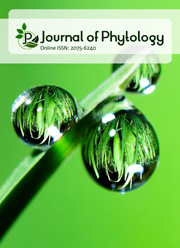Effects of Excess Zn on Growth and Photosynthetic Performance of Young Bean Plants
Abstract
Phaseolus vulgaris L. cv. Lodi plants were grown in a medium containing 200-500 μM of Zn to surpass the threshold of toxicity and assess the inhibitory action on growth, following anatomical changes, the photosynthetic pattern, and Mg, Fe and Mn accumulation. It was found that with increasing Zn accumulation in root and shoot tissues the decreased fresh mass and leaf area correlated with the inhibition of the net photosynthetic rate, transpiration, stomatal conductance, rate of apparent photosynthetic electron transport and isoprenoids accumulation. Additionally, the ratio of variable and maximum fluorescence also remained slightly inhibited with increasing Zn accumulation in the leaves. These alterations further accomplished with a decreasing stomatal index and a thickness of leaf lamina, whereas in the roots the bark, the radius of the central cylinder and diameter of the largest tracheae also diminished. Additionally, the contents of Mg, Fe and Mn in root and shoots tissues also became affected at different levels. It is concluded that excess Zn triggers disturbances in the waters relations, which affect photosynthesis, namely stomatal conductance and therefore plants growth. It is also pointed that as the accumulation of Mg and Fe is affected chlorophylls and carotenoids synthesis become inhibited.Downloads
Download data is not yet available.
Published
29-06-2011
How to Cite
Lyubka Koleva1 and Fernando Lidon3, A. V. A. N. (2011). Effects of Excess Zn on Growth and Photosynthetic Performance of Young Bean Plants. Journal of Phytology, 3(6). Retrieved from https://updatepublishing.com/journal/index.php/jp/article/view/2279
Issue
Section
Phytophysiology





 .
.